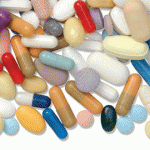NEW YORK (Reuters Health)—There is minimal to no transfer of the tumor necrosis factor (TNF) inhibitor certolizumab (Cimzia) from plasma to breast milk, according to a new study.
“These findings are reassuring” and imply that continuing certolizumab treatment is compatible with breastfeeding, Dr. Megan Clowse of Duke University School of Medicine in Durham, North Carolina, and colleagues write in an abstract presented Nov. 14 at the American College of Rheumatology annual meeting in Washington, D.C.
“Women with chronic inflammatory diseases, including rheumatic diseases and Crohn’s disease (CD), face uncertainty regarding the safety of the use of biologics during breastfeeding,” they point out.
Until now, there were “limited and non-validated” data on the potential transfer of anti-TNF agents into breast milk, they note.
The CRADLE study—short for Concentration of Cimzia in Mature Breast Milk of Lactating Mothers—was a prospective, postmarketing safety and pharmacokinetic study designed to evaluate concentrations of the drug in breast milk, and to estimate average daily infant dose of maternal certolizumab.
CRADLE involved 17 lactating mothers receiving certolizumab for an approved indication.
Using a highly sensitive assay, certolizumab was undetectable in 56% of milk samples collected at various time points, the researchers report.
When detectable, concentrations of the drug were less than three times the lower limit of quantification (less than 1% of expected plasma concentration of a therapeutic dose), “indicating no to minimal transfer” of certolizumab from plasma to breast milk, the researchers say.
The relative infant dose—the daily amount of the drug ingested by infants—was below 0.5% of maternal dose, and less than 10% is considered unlikely to be of clinical concern, they note.
In addition, they say certolizumab absorption by infants through breast milk is “unlikely due to its Fc-free molecular structure and the low bioavailability of biologics after oral administration.”
The study was funded by UCB Pharma. Four authors are employees of the company.
Dr. Clowse did not respond to a request for comment by press time.
Reference
- Clowse MEB, Förger F, Hwang C, et al. Evaluating transfer of certolizumab pegol into breast milk: Results from a prospective, post-marketing, multi-center pharmacokinetic study [abstract]. Arthritis Rheumatol. 2016; 68 (suppl 10).



